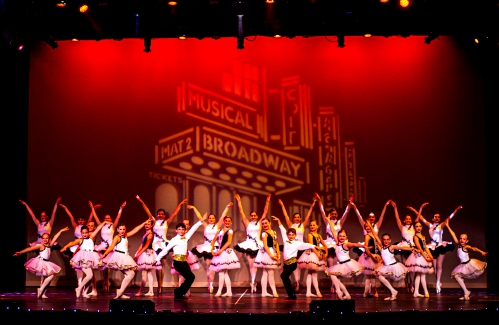
‘Insult to injury’ – Military honors and burial denied for mother in Pembroke murder-suicide
In a quiet corner of Blossom Hill Cemetery, two modest grave markers stand side by side on a bare patch of earth where fresh grass is just beginning to grow—Julia Byrne, 26, on the left, and her three-year-old son, Blake, on the right.

Concord City Council debates flat-funded budget but passes 3% tax increase for 2026
Six hours into discussions about paring down the budget that ultimately yielded a 3% tax increase for next year, former Concord city councilor Bob Washburn took to the microphone.
Most Read
 ‘It’s hard not worrying about it’ – Local Market Basket employees, shoppers react to suspension of CEO Arthur T. Demoulas
‘It’s hard not worrying about it’ – Local Market Basket employees, shoppers react to suspension of CEO Arthur T. Demoulas
 What’s the best way to get to New York City? We tested one of the new options for Concord-area residents.
What’s the best way to get to New York City? We tested one of the new options for Concord-area residents.
 More NH Rite Aid stores slated to close following bankruptcy — but none in Concord
More NH Rite Aid stores slated to close following bankruptcy — but none in Concord
 Bell-to-bell ban on cell phones in schools passes State House with flying colors
Bell-to-bell ban on cell phones in schools passes State House with flying colors
 Opinion: Concord should be run like a household, not a business
Opinion: Concord should be run like a household, not a business
Editors Picks
 The Monitor’s guide to the New Hampshire legislature
The Monitor’s guide to the New Hampshire legislature
 One year after UNH protest, new police body camera footage casts doubt on assault charges against students
One year after UNH protest, new police body camera footage casts doubt on assault charges against students
 ‘It’s always there’: 50 years after Vietnam War’s end, a Concord veteran recalls his work to honor those who fought
‘It’s always there’: 50 years after Vietnam War’s end, a Concord veteran recalls his work to honor those who fought
 ‘We honor your death’ – Arranging services for those who die while homeless in Concord
‘We honor your death’ – Arranging services for those who die while homeless in Concord
Sports

High schools: Softball prelims and other spring tournament results
No. 8 Bow 1, No. 9 Lebanon 0
Opinion

Opinion: Concord should be run like a household, not a business
This My Turn was originally presented as testimony at a city council hearing.
 Opinion: Our leaders’ puzzling decision to eliminate the State Council on the Arts
Opinion: Our leaders’ puzzling decision to eliminate the State Council on the Arts
 Opinion: How dark can it get?
Opinion: How dark can it get?
 Opinion: Unfair taxes, unfair schools: The New Hampshire way
Opinion: Unfair taxes, unfair schools: The New Hampshire way
 Opinion: In the fight to stop sexual violence, can polio hold the solutions?
Opinion: In the fight to stop sexual violence, can polio hold the solutions?

Your Daily Puzzles

An approachable redesign to a classic. Explore our "hints."

A quick daily flip. Finally, someone cracked the code on digital jigsaw puzzles.

Chess but with chaos: Every day is a unique, wacky board.

Word search but as a strategy game. Clearing the board feels really good.

Align the letters in just the right way to spell a word. And then more words.
Politics

New Hampshire school phone ban could be among strictest in the country
When Gov. Kelly Ayotte called on the state legislature to pass a school phone ban in January, the pivotal question wasn’t whether the widely popular policy would pass but how far it would go.
 Sununu decides he won’t run for Senate despite praise from Trump
Sununu decides he won’t run for Senate despite praise from Trump
Arts & Life

White Mountain art exhibition makes new home at New Hampshire Historical Society
The New Hampshire Historical Society’s newest exhibition, “A Legacy of Landscapes: Selections from the Linda and P. Andrews McLane Collection,” displays more than 60 paintings of White Mountain landscape art from a single private collection. Most of these paintings have not been on view to the public for many years.
 A sneak peak of summer events in the Concord area
A sneak peak of summer events in the Concord area
 Pierce Manse reopens for the season
Pierce Manse reopens for the season
 Vintage Views: The Liars Club
Vintage Views: The Liars Club
 Two Villages Art Society begins summer members show
Two Villages Art Society begins summer members show
Obituaries
 Patricia K. Dahme
Patricia K. Dahme
Concord, NH - We are sad to announce the passing of Patricia (Pat) Dahme, who died on May 26. She was born in New York City on December 23, 1950, to Marjorie and John (Jack) Dahme. She is survived by Brian Kugel, her husband; children P... remainder of obit for Patricia K. Dahme
 Jean-Pierre Matteau
Jean-Pierre Matteau
Franklin, NH - Jean-Pierre Matteau, 70, of Franklin, NH, passed away May 9th at home surrounded by family. Jean was born in Coaticook, Quebec, Canada to Rose Alma and Mastai Matteau and split his time between Canada and the US before s... remainder of obit for Jean-Pierre Matteau
 Ann Louise Davenport
Ann Louise Davenport
Concord, NH - Ann Louise (Harmon) Davenport, 81, longtime resident of Concord, passed away on June 1, 2025, at the Granite VNA Hospice, surrounded by her loving family. She was born on October 31, 1943, to her late parents Stanley and B... remainder of obit for Ann Louise Davenport
 Patricia Ann Griffin
Patricia Ann Griffin
Concord, NH - Patricia Ann Griffin (née Yeazitzis) of Concord, NH, born on November 11th, 1960 in Chicopee, MA, passed away on February 11th, 2025 following a brief illness. Patricia, known to friends and loved ones as Patty-Ann, Patty... remainder of obit for Patricia Ann Griffin


 ‘Public school is not for everyone:’ CSI Charter graduates find success in alternative school system
‘Public school is not for everyone:’ CSI Charter graduates find success in alternative school system
 ‘It was painful’: State budget passes in the Senate
‘It was painful’: State budget passes in the Senate
 High schools: Bow, Hopkinton girls’ lax advance to D-III semis; baseball prelims
High schools: Bow, Hopkinton girls’ lax advance to D-III semis; baseball prelims
 Girls’ lacrosse: Second half comeback sends MV to semis
Girls’ lacrosse: Second half comeback sends MV to semis
 Baseball: John Stark’s Philibotte named D-II Player of the Year, All-State teams released
Baseball: John Stark’s Philibotte named D-II Player of the Year, All-State teams released
 Parental bills of rights, with mandatory disclosure clause, head to Ayotte’s desk
Parental bills of rights, with mandatory disclosure clause, head to Ayotte’s desk
 Special Olympics New Hampshire kicks off summer games in front of State House
Special Olympics New Hampshire kicks off summer games in front of State House

 Boys’ tennis: Kearsarge claims third D-III title in five years, Bishop Brady makes first appearance since 1973
Boys’ tennis: Kearsarge claims third D-III title in five years, Bishop Brady makes first appearance since 1973 Girls’ lacrosse: Bow wins first round game against Kearsarge, 18-3
Girls’ lacrosse: Bow wins first round game against Kearsarge, 18-3 Boys’ tennis: Kearsarge and Bishop Brady win D-III semifinals, will face off in championship
Boys’ tennis: Kearsarge and Bishop Brady win D-III semifinals, will face off in championship Track & field: Distance runners lead Hopkinton to D-III title defense
Track & field: Distance runners lead Hopkinton to D-III title defense Concord became a Housing Champion. Now, state lawmakers could eliminate the funding.
Concord became a Housing Champion. Now, state lawmakers could eliminate the funding. ‘A wild accusation’: House votes to nix Child Advocate after Rep. suggests legislative interference
‘A wild accusation’: House votes to nix Child Advocate after Rep. suggests legislative interference  Town elections offer preview of citizenship voting rules being considered nationwide
Town elections offer preview of citizenship voting rules being considered nationwide
